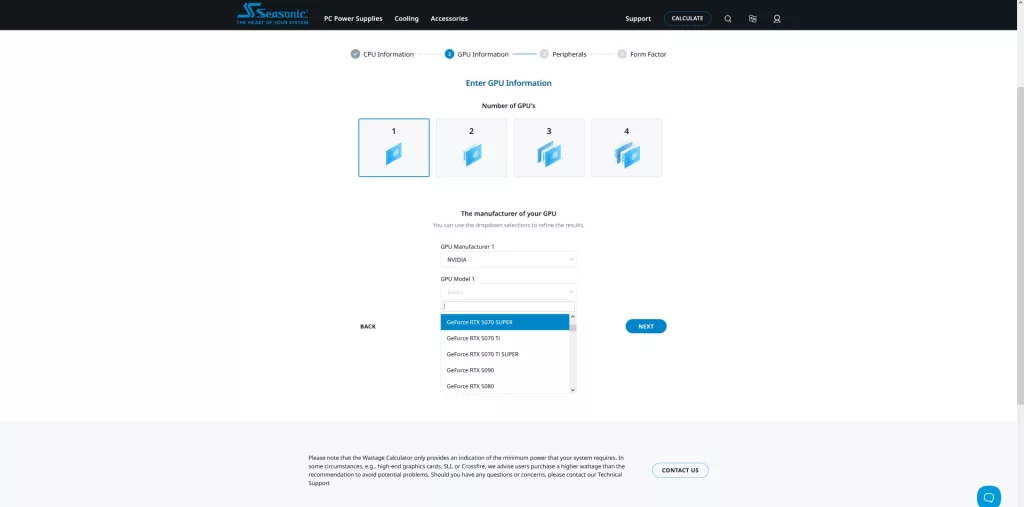
Fall is here, and as usual, the rumor mill is in full swing, as are the industry leaks, with news regarding NVIDIA’s RTX 50 SUPER series. There’s never been any doubt that NVIDIA’s GPU refresh would be inbound; the question is not if but when it will be officially announced and when the launch will occur. There’ve been multiple rumors about these two events, but one of the more plausible is that NVIDIA will announce the RTX 50 SUPER series at CES 26. After all, NVIDIA has an established track record in revealing its newest GPUs at CES.
However, when it comes to a release schedule for its GPU refresh stack, details are a bit less consistent, but according to Benchlife, we could see them arrive sometime between March and May. This, too, seems somewhat plausible given that NVIDIA often staggers its GPU releases throughout the spring months. It’s also stated that to date, no board partners have been given any notifications regarding this SUPER series.
The next tidbit comes not as a rumor but as an actual product listing. Seasonic has updated its online wattage calculator to include two of three rumored RTX 50 SUPER series GPUs, namely the GeForce RTX 5070 SUPER and the GeForce RTX 5070 Ti SUPER. Oddly enough, the GeForce RTX 5080 SUPER is absent.

Expectations for the RTX 50 SUPER series should be tempered as rumors have remained consistent regarding their configurations. Once again, the mid-tier GeForce RTX x70 appears to be the model getting the most upgrades. The RTX 5070 SUPER could, as seen with the RTX 4070 SUPER, see its core count, memory, and TGP increased compared to the non-SUPER version, giving it potentially a more substantial performance increase over its predecessor, something that also happened with the RTX 4070 SUPER vs the RTX 4070.
Meanwhile, the most notable changes expected for the RTX 5070 Ti SUPER and RTX 5080 SUPER are their memory upgrades. Many have commented on how their 16 GB VRAM is a bit underwhelming and possibly limiting performance, and so the ongoing rumor has been that each will be upgraded to 24 GB GDDR7. It’s also been claimed that this is due to 3 GB GDDR7 modules now being available. This rumor is further substantiated by the fact that the mobile RTX 5090, which uses a cut-down RTX 5080 GB203 die, features 24 GB VRAM.
As of now, the only other spec rumored to increase is their TGP, which seems logical given the speculated memory increase. It’s said that the RTX 5080 already has the fully-enabled GB203 die, so increasing the core count would not be possible, but perhaps its boost clock might see an increase. The 5070 Ti SUPER also uses a cut-down GB203 die and could have its core count increased, but that move would be unlikely since it would further encroach upon the RTX 5080, thus risking lost sales numbers for that card. However, it too might have a boost clock increase.
| Model | GPU SKU | CUDA Cores | GPU Boost Clock | VRAM Size-Type | VRAM Bus | Bandwidth | TGP |
| GeForce RTX 5080 SUPER | GB203-450 | 10,752 | TBD | 24 GB GDDR7 | 256-bit | 1,024 GB/s | 415 Watts |
| GeForce RTX 5080 | GB203-400 | 10,752 | 2,617 MHz | 16 GB GDDR7 | 256-bit | 960 GB/s | 360 Watts |
| GeForce RTX 5070 Ti SUPER | GB203-350 | 8,960 | TBD | 24 GB GDDR7 | 256-bit | 896 GB/s | 350 Watts |
| GeForce RTX 5070 Ti | GB203-200 | 8,960 | 2,452 MHz | 16 GB GDDR7 | 256-bit | 896 GB/s | 300 Watts |
| GeForce RTX 5070 SUPER | GB205-400 | 6,400 | TBD | 18 GB GDDR7 | 192-bit | 672 GB/s | 275 Watts |
| GeForce RTX 5070 | GB205-300 | 6,144 | 2,512 MHz | 12 GB GDDR7 | 192-bit | 672 GB/s | 250 Watts |
Table: The FPS Review
One thing is given for all this, though, as we get closer to the holiday season, there will likely be more leaks and rumors surfacing since that is a long-established pattern regarding new GPU releases. The only other questions really left unanswered are pricing and availability, because after all, as also seen with most GPU launches, just because a manufacturer gives a price or date, it doesn’t mean consumers can actually get new cards at the launch date or for MSRP. It is hoped that the RTX 50 SUPER series will launch at the same or lower price, versus its non-SUPER counterparts, but that remains to be seen and could be more difficult given current global economic conditions.
